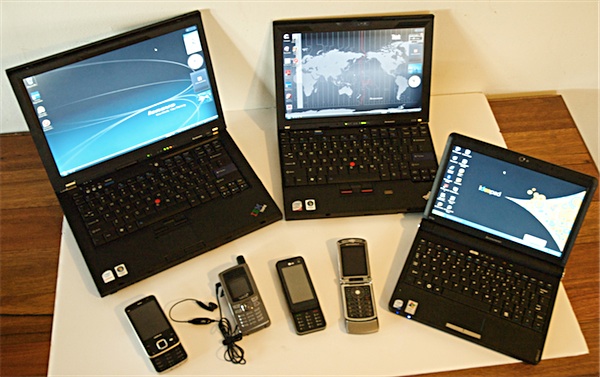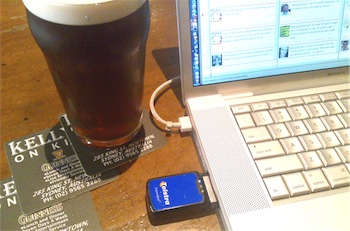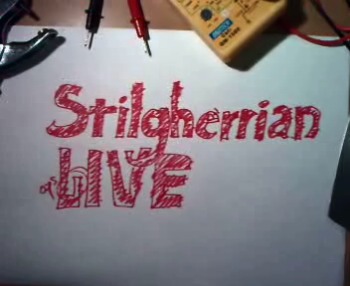
This is the hardware I’m taking to Africa for Project TOTO for ActionAid Australia, courtesy of our supporters. While I’ve said before that social media is about the people not the tools, this kind of support is great. So, what’s in the picture?
In the back row there’s a pair of laptops to leave in Tanzania, thanks to Lenovo Australia: a refurbished ThinkPad R61 (left) and a brand new ThinkPad X200 (right). I’ll review the X200 at the end of our mission. Both are running Windows Vista Business.
In the front row, from left to right:
- My own Nokia N96, to which we can compare the size of everything else. (It’s about the same size as an iPhone, Mark.)
- A Thuraya SO-2150 satellite phone from Optus, thanks to Internode who are paying the bills. Yes, that tiny little thing is a satellite phone!
- A Motorola MotoRazr V3xx multimedia phone, and
- An LG KF700Q multimedia phone, both thanks to Telstra, and both of which stay in Tanzania.
- A Lenovo IdeaPad S10e netbook running Windows XP, again thanks to Lenovo Australia, which is what I’ll be using instead of my usual MacBook Pro while I’m on the road. I’ll write about that experience as I go. However I’m very nervous about not having my usual computer with all its software loaded, and I still have to transfer my workflows to that system tonight.
So, some questions…
We’ll be able to pair the two phones to the two ThinkPads for ActionAid International Tanzania. Our blogs are running on WordPress. So they can quickly catalog their photos and videos and upload them, what tools would you recommend for the job? Remember, this is running Vista, and while I personally would consider switching to Ubuntu Linux, there isn’t time and Vista is what they already support in their office.
And as for me, running Windows XP and wanting to throw something together quickly tonight, what would you recommend?



